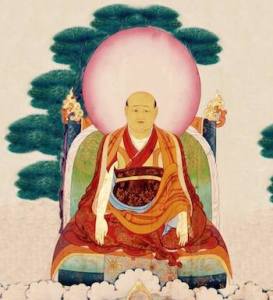 For English-reading fans of Dza Patrul Rinpoche (rdza dpal sprul rin po che, 1808–1887) these are bountiful times. July saw the publication of Matthieu Ricard’s collection of stories and texts, Enlightened Vagabond, after some three or four decades of research and preparation. This month’s A Gathering of Brilliant Moons includes translations of no less than four texts from the master (by Holly Gayley, Joshua Schapiro and Sarah Harding), and The Essential Jewel of Holy Practice will be released shortly, too.
For English-reading fans of Dza Patrul Rinpoche (rdza dpal sprul rin po che, 1808–1887) these are bountiful times. July saw the publication of Matthieu Ricard’s collection of stories and texts, Enlightened Vagabond, after some three or four decades of research and preparation. This month’s A Gathering of Brilliant Moons includes translations of no less than four texts from the master (by Holly Gayley, Joshua Schapiro and Sarah Harding), and The Essential Jewel of Holy Practice will be released shortly, too.
Patrul Rinpoche, like most Tibetan masters, has several names. He is often called Dza Patrul (Rinpoche) in reference to his native Dzachukha, and more formally he is Orgyen Jigme Chökyi Wangpo (o rgyan ‘jigs med chos kyi dbang po). Another term which occurs in almost every book that features Patrul—and which almost always occasions a footnote—is Abu. This is both how he often refers to himself, as part of expressions such as Abu Hralpo (a bu hral po), Abu Lhöpo (a bu lhod po) and “old dog Abu” (khyi rgan a bu), and how his students often refer to him: as Abu Rinpoche or simply Abu.
But what does Abu mean? What, in other words, do all those footnotes have to say?

 In
In  Amongst the many things Tibetans inherited from India was a sense that names, when applied to exalted beings, are far more than mere verbal labels aiding identification. Deities’ names capture something of their essence, and reciting them is a form of invocation and praise. Most mantras have names at their heart, and there are whole texts, such as Mañjuśrī–nāma-saṃgīti (Reciting the Names of Mañjuśrī), devoted to lists of alternative names or epithets.
Amongst the many things Tibetans inherited from India was a sense that names, when applied to exalted beings, are far more than mere verbal labels aiding identification. Deities’ names capture something of their essence, and reciting them is a form of invocation and praise. Most mantras have names at their heart, and there are whole texts, such as Mañjuśrī–nāma-saṃgīti (Reciting the Names of Mañjuśrī), devoted to lists of alternative names or epithets.
You must be logged in to post a comment.